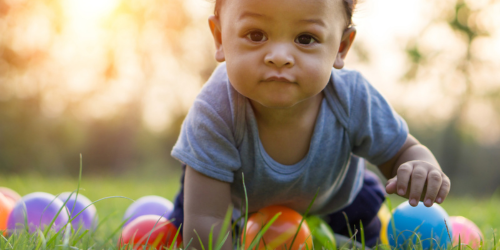Reaching children during childhood is key to lifelong physical literacy
 It has never been more clear that people who are encouraged to develop their physical literacy during their foundational childhood years are much more likely to remain active throughout their lives – but it requires support and proactive guidance from their educators.
It has never been more clear that people who are encouraged to develop their physical literacy during their foundational childhood years are much more likely to remain active throughout their lives – but it requires support and proactive guidance from their educators.
A generation ago, unstructured play and risky play were common, which helped prepare children for a lifetime of active pursuits. However, we now face a situation where these experiences are rare, and we need to support the development of physical literacy as a countermeasure – a topic covered in Developing Physical Literacy: A New Normal for All Canadians.
“Physical literacy needs to be actively developed as it cannot be assumed that it will occur naturally as part of normal growth. While part of the solution is to provide greater opportunities for unstructured play and risky activity, it is important to remember that people of all ages do not innately develop motivation, confidence, physical competence, knowledge and understanding to value and take responsibility to be active for life,” reads the resource.
This is the guiding principle behind much of the work being done at Sport for Life, whether it’s supporting the construction of a physical literacy-themed daycare, championing inclusion through the Long-Term Development in Sport and Physical Activity framework, or promoting cross-sectoral partnerships that will benefit students through the Physical Literacy for Communities (PL4C) initiative.
Supporting educators to impact students through physical literacy
In a recent article from the Sport Information Resource Centre, University of Victoria professor Jean Buckler argued that based on the available evidence, early childhood educators are not receiving the education and professional development they need to properly facilitate physical literacy development in their participants.
“Therefore, professional development programs are crucial in supporting educators in gaining the skills, confidence, knowledge and capacity to support children’s development in these areas. Providing training to early childhood educators has been successful in supporting increased knowledge, confidence, and intention to support physical activity and physical literacy,” Buckler writes.
According to the article, the following three things should be kept in mind when training these educators: ongoing support, theoretical basis, and accountability and program adherence (read the full article on the SIRC website).
These are foundational elements of the work Sport for Life does when empowering educators and physical literacy observers.
Empowering through physical literacy observation
Depending on the project and the participants involved, Sport for Life aims to address all three of Buckler’s concerns. In projects such as the PL4C initiative, educators and observers are given the ongoing support they need to guide participants along their physical literacy journey.
This is backed up by theoretical research by specialists like Dr. Dean Dudley or Dr. John Cairney, and presented in our resources such as Active for Life: Durable by Design or Physical Literacy in Aquatic Environments.
Finally, we ensure program adherence by providing ongoing training both within and outside the sport system, through groups such as Active Sudbury. Recently, education opportunities in the Atlantic region of Canada were offered with the train to train model, making sure that PL4C mentors know the correct way to use PLAY Tools and observe physical literacy in children.
These PLAY Tools were originally developed by Dr. Dean Kriellaars, one of the experts who has worked closely with Sport for Life over the years. Acting as a catalyst for change within the quality sport and physical literacy ecosystem, these tools are meant to improve our population’s level of physical literacy.
Directed at individuals aged five and up, the PLAY Tools determine gaps in physical literacy development, and provide ways for early childhood educators to take action to help improve these areas. By correctly identifying where the child is in their physical literacy trajectory, they can then custom-design activities and encourage movements that will help them progress and acquire the ability to complete new fundamental movement skills.
These tools are just one way that Sport for Life is impacting youth, and empowering their educators. During the COVID-19 pandemic, our organization released a series of videos called “Physical Literacy at Home” aimed at teaching parents how to keep their kids active, our Quality Sport for Communities and Clubs checklist ensures their engagement with sport is positive, and recently we unveiled a PLAY website aimed at making information about physical literacy observation more accessible.
“The work we’re doing has the potential to impact multiple generations, in communities from coast to coast to coast. People who have developed their physical literacy enjoy a number of benefits, ranging from more positive mental health to increased protection against disease and aging,” said Mitchell.
“By investing in the early education of children, we’re making an investment in our country’s future.”

